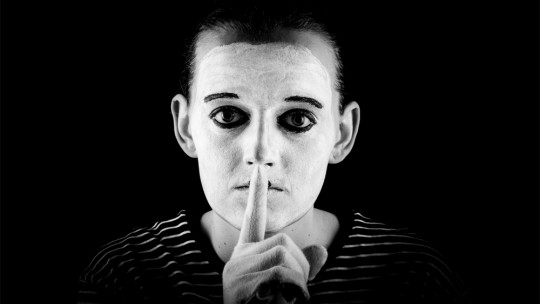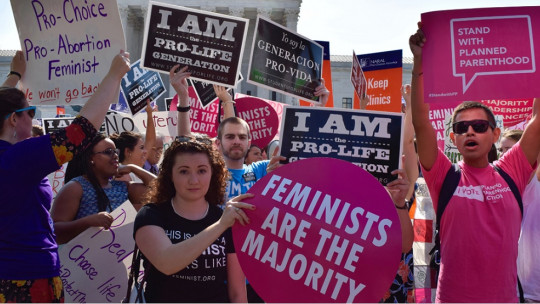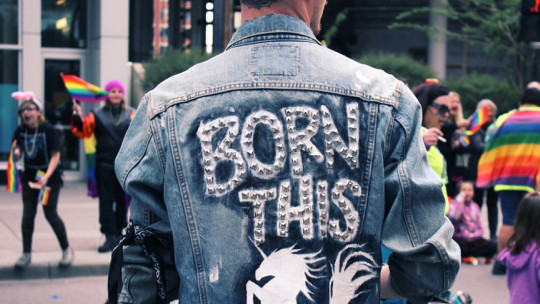
Sometimes there are tensions between the values of different groups and these are aggravated if there is an asymmetry between them.
Ian Meyer tries to explain this phenomenon through his minority stress model Below we will try to see it in detail in order to better understand its approach and the repercussions that this model entails for the understanding of this phenomenon.
What is Ian Meyer’s minority stress model?
Ian Meyer’s minority stress model is a system developed by this author to try to explain the negative consequences on the mental health of people belonging to minorities related to sexual orientation such as homosexuality or bisexuality, as a result of the conflict that is generated by the prejudices that people belonging to the majority group have about them.
What Meyer tried to explain through this model, created in 2003, is that these minority populations would be subjected to a series of stressors related to their sexual identity and the perception that people who do not belong to them have of them. minority groups.
This whole series of stressors, which we will see in detail later, would be increasing the possibilities of generating psychological discomfort and therefore alterations in the mental and even physical health of these individuals. This is precisely what Ian Meyer’s minority stress model tries to explain.
The key to this model is that affirms that the factors that generate stress for these minorities act only in this direction, so they would not represent any stressor towards individuals from the majority This issue generates an imbalance, since members of minority groups are affected by a series of issues that only have a negative effect on them, compared to a majority that is oblivious to the problem.
Stressors for minorities
Within Ian Meyer’s minority stress model there are different issues that could fit as stressors for these groups. Let’s see some of the most important ones.
1. Previous experiences of prejudice
The first of the factors that may be affecting people according to Ian Meyer’s minority stress model would be the individual’s own previous experiences in which the individual has experienced prejudice towards himself or towards other people due to his sexual orientation, that is, due to belonging to that minority group, in this case. These experiences could have been lived a long time ago and have accumulated.
Each of these events acts as one more drop of stress that weakens the individual until he or she is completely exhausted, therefore they produce a cumulative and increasingly intense effect of suffering in the person who is being stigmatized as a result of their sexual orientation. The memory of these past experiences represents discomfort that can lead to the deterioration of the individual’s mental health.
2. Expectations of being rejected
All those negative experiences in which the person has been discriminated against due to their sexual preferences not only affect them from the past, but also cause discomfort in the future, since they are generating a series of expectations about what can happen. keep happening to you. That is, the individual who has already been rejected for his identity in the past fears continuing to be so in the future.
Therefore, this second factor within Ian Meyer’s minority stress model has to do with the double victimization that people who are victims of prejudice and stigmatization receive And not only have they suffered the pain of being rejected before, but they also have the pressure of having to go through the same thing repeatedly in the future, with the stress that this entails.
3. Concealment
It is logical to think that if the person has experienced negative situations before and is also afraid that this will happen again in the future, they can take measures to prevent this from happening. On many occasions and in the absence of alternatives, they choose concealment. This translates into socially hiding their sexual identity, so that they avoid expressing what they really feel and, ultimately, who they really are.
Of course, this situation is not simple. Giving up one’s identity is something extremely painful and stressful. Therefore, the strategy is ambivalent, since on the one hand The person is managing to avoid the discomfort generated by the criticism of people from the majority group as a result of prejudices and stigmatization, but on the other hand they are paying a high cost which is to hide a very important part of oneself.
What’s more, sometimes concealment does not even have that false positive part of avoiding stigmatization, because although the person hides their sexual identity this does not prevent them from witnessing situations in which individuals from the majority group reject others from the minority group in some way. In this case, although the victimization did not happen in the first person, it has still affected the spectator.
Therefore, it must be taken into account that this factor from Ian Meyer’s minority stress model causes discomfort in several ways. First, because the person is forced to renounce their sexual identity publicly. Secondly, because this does not prevent him from witnessing situations of victimization towards colleagues from his minority group or from others. And third, because his concealment prevents him from coming to the defense of said victims, so as not to be exposed himself.
4. Internalized homophobia
In recent years there have been great social changes in favor of the acceptance of different forms of sexual identity. But This does not mean that a series of homophobic ideas and beliefs no longer exist in many people More importantly, even in gay people or people belonging to other minorities, there may also be internalized homophobic ideas.
How is this possible? It is due to having been raised under specific schemes that, although they have clashed head-on with the person’s own sexual orientation, have been very present for a long time in the individual’s own beliefs. This factor from Ian Meyer’s minority stress model would be another source of discomfort for these groups.
In this case Individuals who experience this internalized homophobia and at the same time belong to sexual minority groups will suffer cognitive dissonance, as there will be an imbalance between the homophobic action (whether it is a comment, a quick thought or any other behavior) and your own identity. This process will increase the stress of these people.
5. Coping processes
The last of the main factors that can generate discomfort within Ian Meyer’s minority stress model refers to the coping processes that the person can carry out to confront acts of stigmatization received by individuals belonging to the majority group. This behavior also has a negative counterpart.
In this case, Although the person tries to avoid being stigmatized, facing the situation actively, they encounter the possible conflict that this entails, so she finds herself in the position of being victimized whether she does nothing or decides to do something about it. This means that in any of the scenarios there is uncertainty about the possible repercussions.
Therefore, the very fact of facing situations that involve stigmatization also represent a stressful route for the member of the minority group.
In conclusion
After having known in detail all the processes that underlie Ian Meyer’s minority stress model, we can better understand what this author is referring to with his approach. What all the factors that we have seen described have in common is that they would only be affecting those individuals whose sexual identity makes them fit into a minority group in that sense.
Therefore, the majority group, that is, the entire group of people who would not have this feeling of belonging to those groups, would not suffer the forms of stigmatization that have been listed and consequently would not be affected by the possible repercussions of that stress. accumulated, which could translate into health problems on a psychological and/or physical level.








